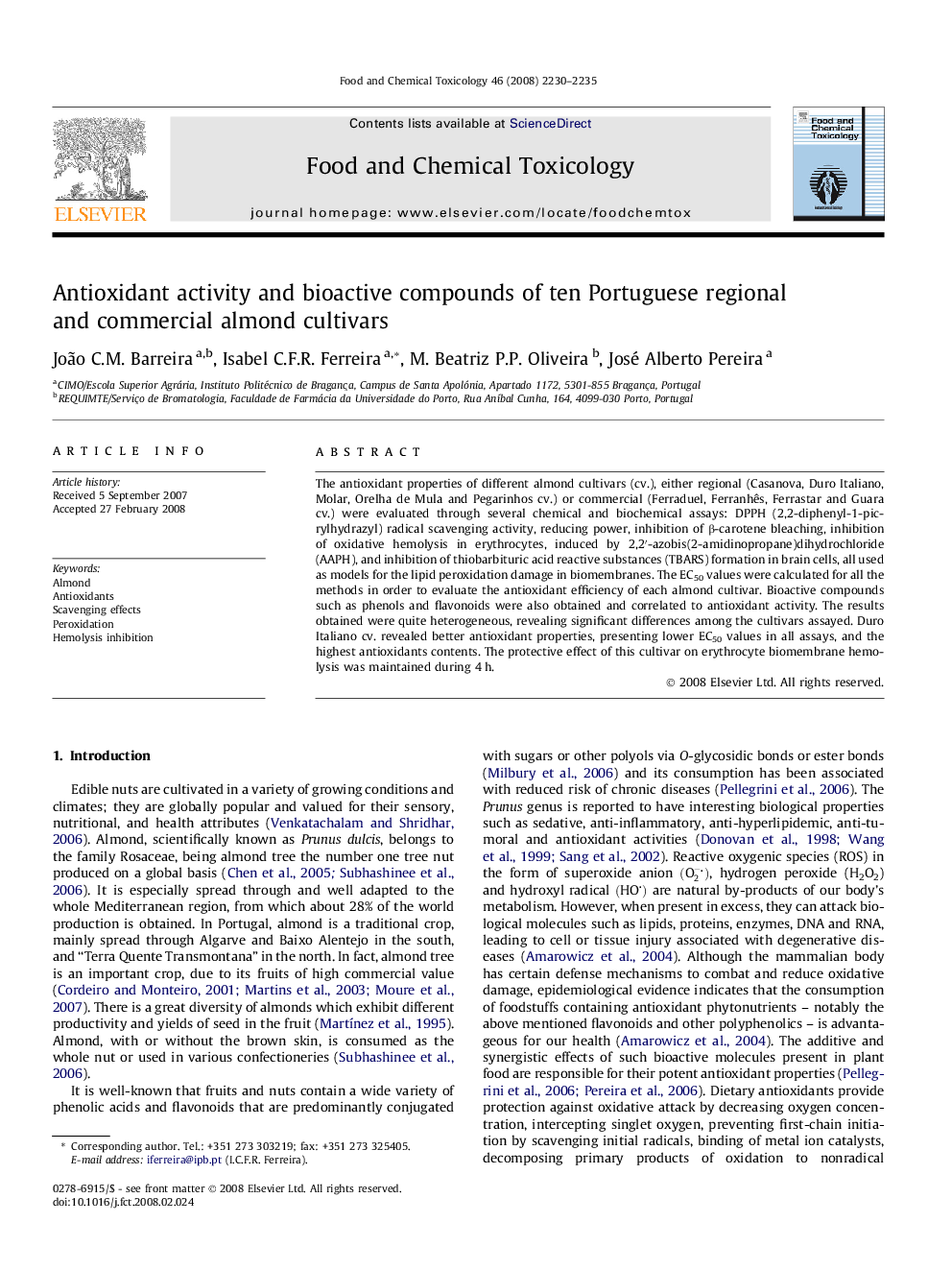| Article ID | Journal | Published Year | Pages | File Type |
|---|---|---|---|---|
| 2586792 | Food and Chemical Toxicology | 2008 | 6 Pages |
The antioxidant properties of different almond cultivars (cv.), either regional (Casanova, Duro Italiano, Molar, Orelha de Mula and Pegarinhos cv.) or commercial (Ferraduel, Ferranhês, Ferrastar and Guara cv.) were evaluated through several chemical and biochemical assays: DPPH (2,2-diphenyl-1-picrylhydrazyl) radical scavenging activity, reducing power, inhibition of β-carotene bleaching, inhibition of oxidative hemolysis in erythrocytes, induced by 2,2′-azobis(2-amidinopropane)dihydrochloride (AAPH), and inhibition of thiobarbituric acid reactive substances (TBARS) formation in brain cells, all used as models for the lipid peroxidation damage in biomembranes. The EC50 values were calculated for all the methods in order to evaluate the antioxidant efficiency of each almond cultivar. Bioactive compounds such as phenols and flavonoids were also obtained and correlated to antioxidant activity. The results obtained were quite heterogeneous, revealing significant differences among the cultivars assayed. Duro Italiano cv. revealed better antioxidant properties, presenting lower EC50 values in all assays, and the highest antioxidants contents. The protective effect of this cultivar on erythrocyte biomembrane hemolysis was maintained during 4 h.
